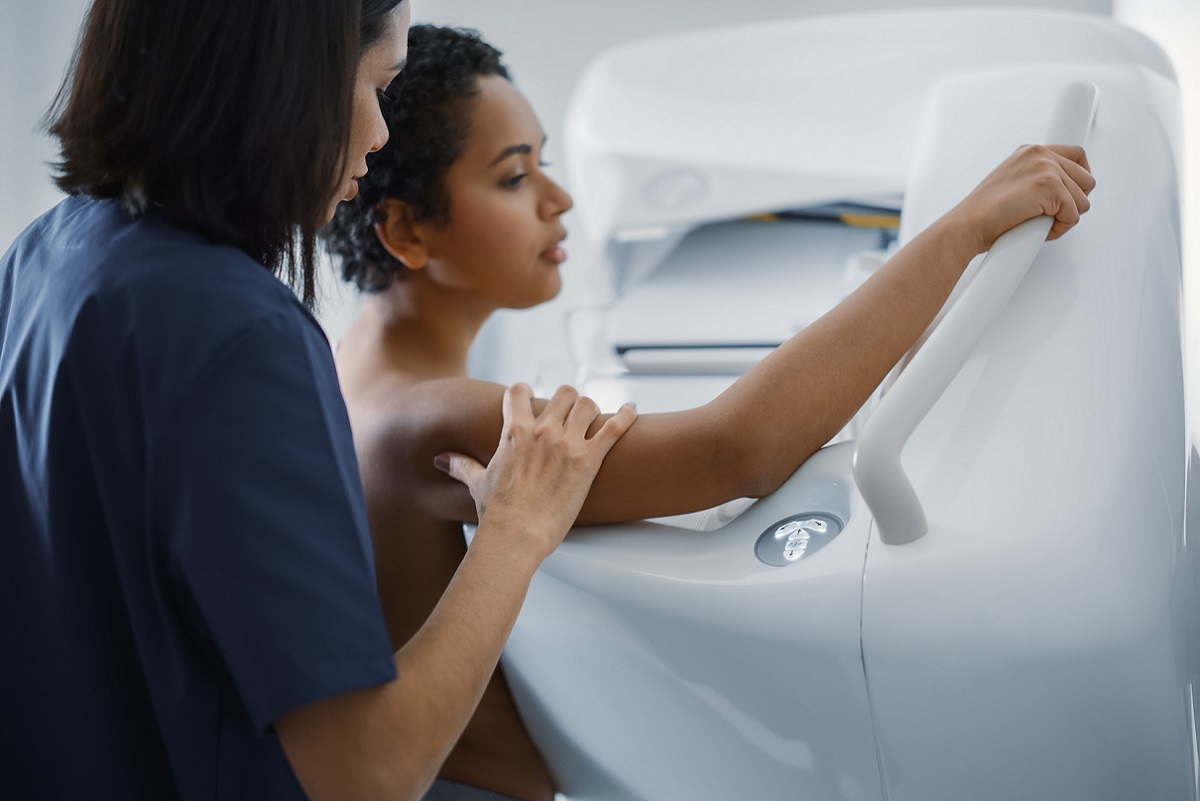New Federal Regulation Concerning Breast Density Takes Effect
April 9, 2025
Categories: Womens Health, Oncology
On September 10th, 2024, the FDA implemented a regulation about breast density awareness. They now require all mammography reports to include each patient’s breast density classification and a statement explaining its importance. This rule aims to ensure that patients like yourself understand their own breast density and how it might impact future care.
Breast density includes four levels:
- A: Almost entirely fatty means the breasts are almost entirely made up of fatty tissue. There is very little dense breast tissue.
- B: Scattered areas of fibroglandular density means the breasts are mostly made up of fatty tissue, but there are some scattered areas of dense breast tissue.
- C: Heterogeneously dense means that most of the breast tissue is dense breast tissue, but there are some areas of fatty tissue.
- D: Extremely dense means that nearly all of the breast tissue is dense breast tissue. There is very little fatty tissue.
Generally, breasts that are considered dense fall into categories C or D. Now, any mammogram report you (and your primary care provider) receive should include your density level.
Why Does This Matter?
As the importance of breast density has become clearer, the healthcare industry has directed increasing attention toward its indications. The main concern regarding dense breast tissue is that when present, mammograms have a more difficult time detecting breast cancer.
“Dense breast tissue shows up as white tissue on a mammogram, whereas fatty tissue is black. Breast cancers are usually white masses, so when a woman has dense breast tissue, we are looking for a white mass on a white background. This means that smaller masses can blend in with a woman's normal breast tissue and be obscured on the mammogram,” explains Laura Linstroth, MD, a breast radiologist and Medical Director of the Saint Alphonsus Breast Care Center.
How Does the New Regulation Help Me?
If you are told that you have dense breast tissue, you will now be better able to advocate for your breast health. Ask your healthcare provider if they would recommend supplemental screening for you going forward, taking your breast density and any other breast cancer risk factors into account.
Currently, experts have not reached a consensus about which additional imaging type to recommend to people with dense breast tissue. However, studies strongly suggest that supplemental imaging, especially breast MRI, helps detect more breast cancers than mammography alone in this population.
“We also have new technology that helps us as radiologists detect breast cancer in women with dense breast tissue. One is automated whole breast ultrasound (ABUS), and another is abbreviated breast MRI.
These technologies are new and have been shown to detect more breast cancers when combined with mammography.
It is important to note that these are supplemental imaging studies. They do not replace mammography; they complement it. There are some types of breast cancer or pre-cancer that we can see only with mammograms,” notes Dr. Linstroth.
What Else Should I Know?
Dense breasts are common. According to The National Cancer Institute, they are found in nearly half of the women over age 40 who get mammograms. Additionally, you cannot determine your breast density by performing a self-examination. It must be classified using imaging.
That being said, performing breast self-examinations at least once a month is highly recommended. This practice is the best way to familiarize yourself with your breasts and breast tissue so you can notice when changes occur and report them to your healthcare provider.
Breast Cancer Risk Assessment Tools
The new FDA regulation on breast density arms you with a tool to advocate for best screening practices personalized to your body. You may want to ask your healthcare provider about a couple of other tools: the Tyrer-Cuzick score and the Breast Cancer Risk Assessment Tool.
Both of these tools can help patients get a sense of what their risk status is for breast cancer. Patients are encouraged to use and interpret these tests with the help of a healthcare provider.
Arming yourself with knowledge is a great way to advocate for your health. Stay on top of your breast screenings and keep an eye out for your breast density level on your next mammography report.

Kat Zimmerman, BSN, RN, is a Registered Nurse, trained copywriter, and breast cancer survivor turned freelance nurse writer. She aims to blend the best of three worlds when writing content: the knowledge and credibility of an RN, the skills of a trained writer, and the firsthand perspective of being a patient. She has two years of experience as a breast care nurse navigator, and she specializes in writing on topics such as breast care, breast cancer, and oncology.
